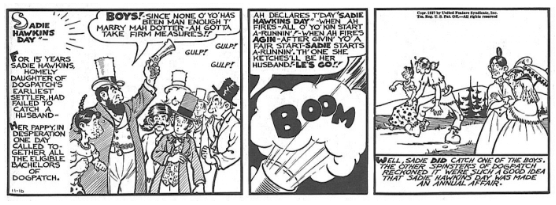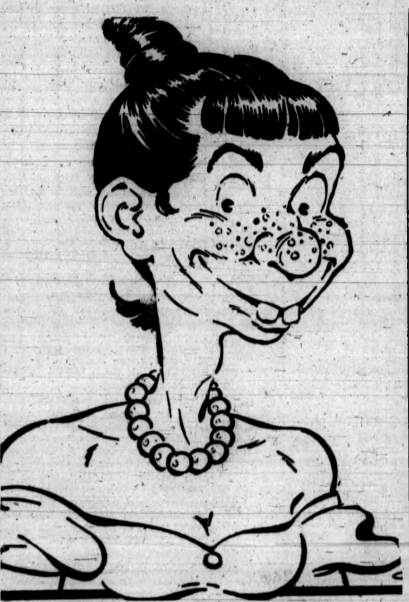Who is Sadie Hawkins?
September 21, 2017
The Sadie Hawkins Dance will be this Friday, September 22, from 7 to 10pm at Pentucket Regional High School in the cafeteria. The dance is being hosted by peer mentors, who encouraged the “welcome back” theme to be changed to a Sadie Hawkins theme. But who is Sadie Hawkins?
Despite what some believe, Sadie Hawkins is not a real person and there is no real Sadie Hawkins day. Sadie Hawkins originated from her feature in the comic strip “Li’l Abner” released by Al Capp on November 15, 1937.
In the comic strip, the father of the unmarried 35 year old Sadie Hawkins gathers all the single bachelors in the fictional town and has Sadie Hawkins, “the homeliest gal in all them hills,” choose a bachelor to marry. The other unmarried women in the town liked this concept so much that they began doing it themselves, thus carrying on Sadie Hawkins’ tradition.

Image source: http://www.worldwideweirdholidays.com
Mrs. Millard, guidance counselor and peer mentor adviser at Pentucket, was aware of the premise of the Sadie Hawkins dance, in which females ask males, but was unaware of its comic strip origins. Upon reading the comic strip, Millard remarked “That’s horrible.”
While some view the Sadie Hawkins dance as merely a theme or encouragement for girls to ask out guys, there have also been criticisms on how it may exclude members of the LGBTQ+ community.
Senior Danielle Arsenault believes these criticisms are “Super valid, especially today,” as “we live heteronormative society where it’s just sort of expected for boy and girl pairings.”
Another Pentucket student who identifies as a member of the LGBTQ+ community agrees with these criticisms, and he was previously unaware of the origins of Sadie Hawkins. In fact, he formerly believed Sadie Hawkins was a symbol of female empowerment, but “seeing [the comic strip], it’s just kind of like stupid,” and “the attitudes like surrounding Sadie Hawkins…like girls ask boys, I think it’s restrictive and exclusive.”
Instead of deciding on a particular theme, this student believes that “a themeless dance is fine.”
However, “It’s really about bringing anyone you want, and the last thing we would want to do is ostracize anyone from any activity here,” Millard says, “It’s just asking someone that you really enjoy spending time with.”











